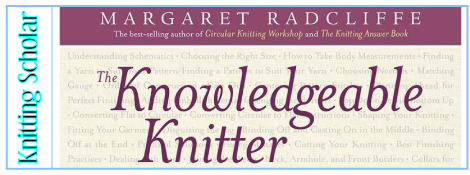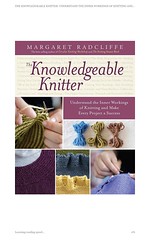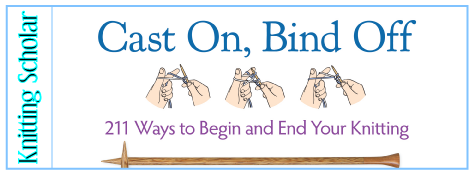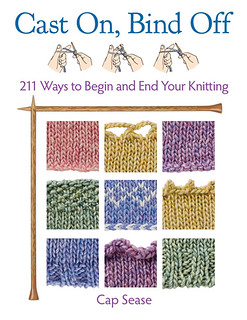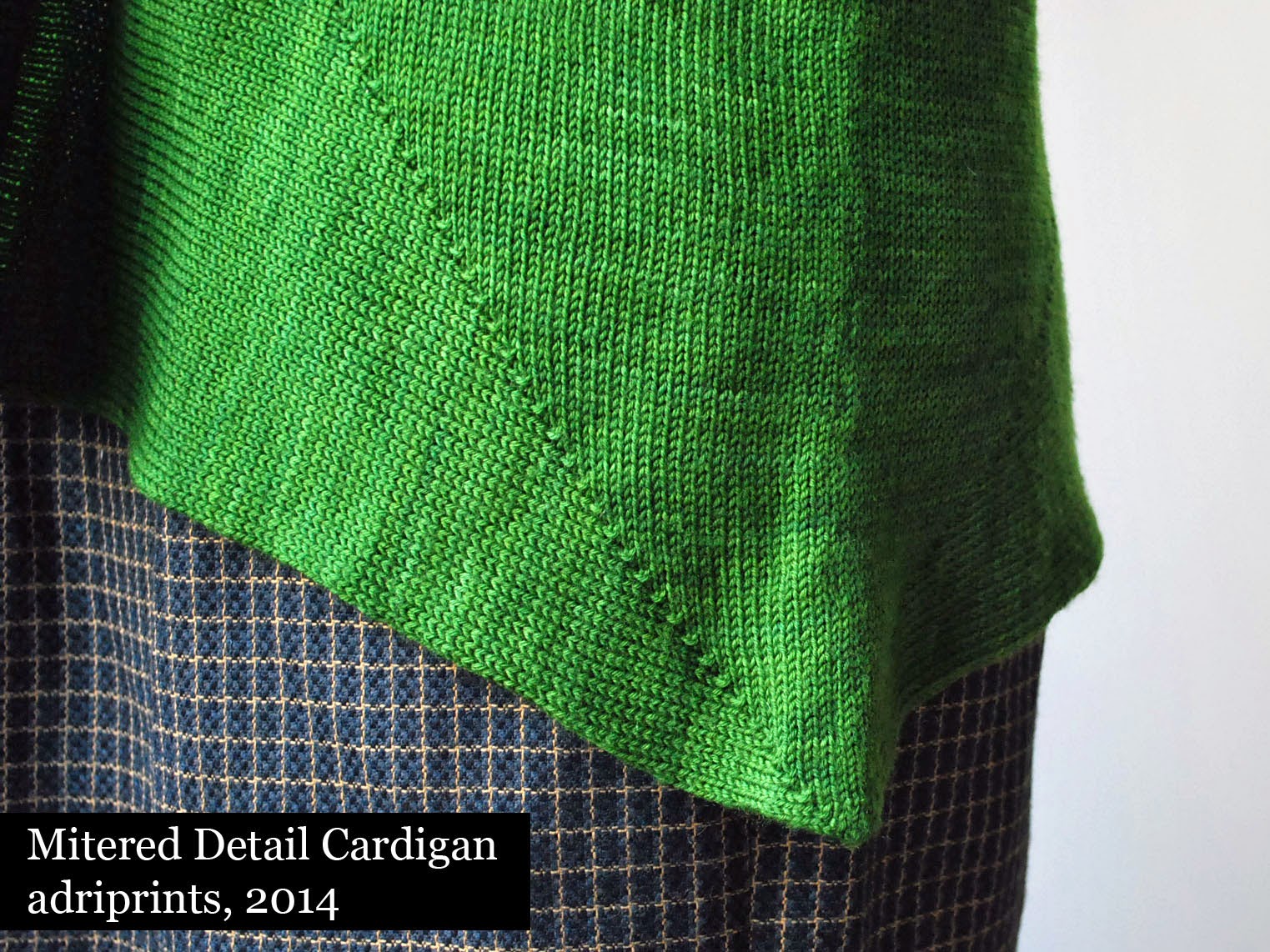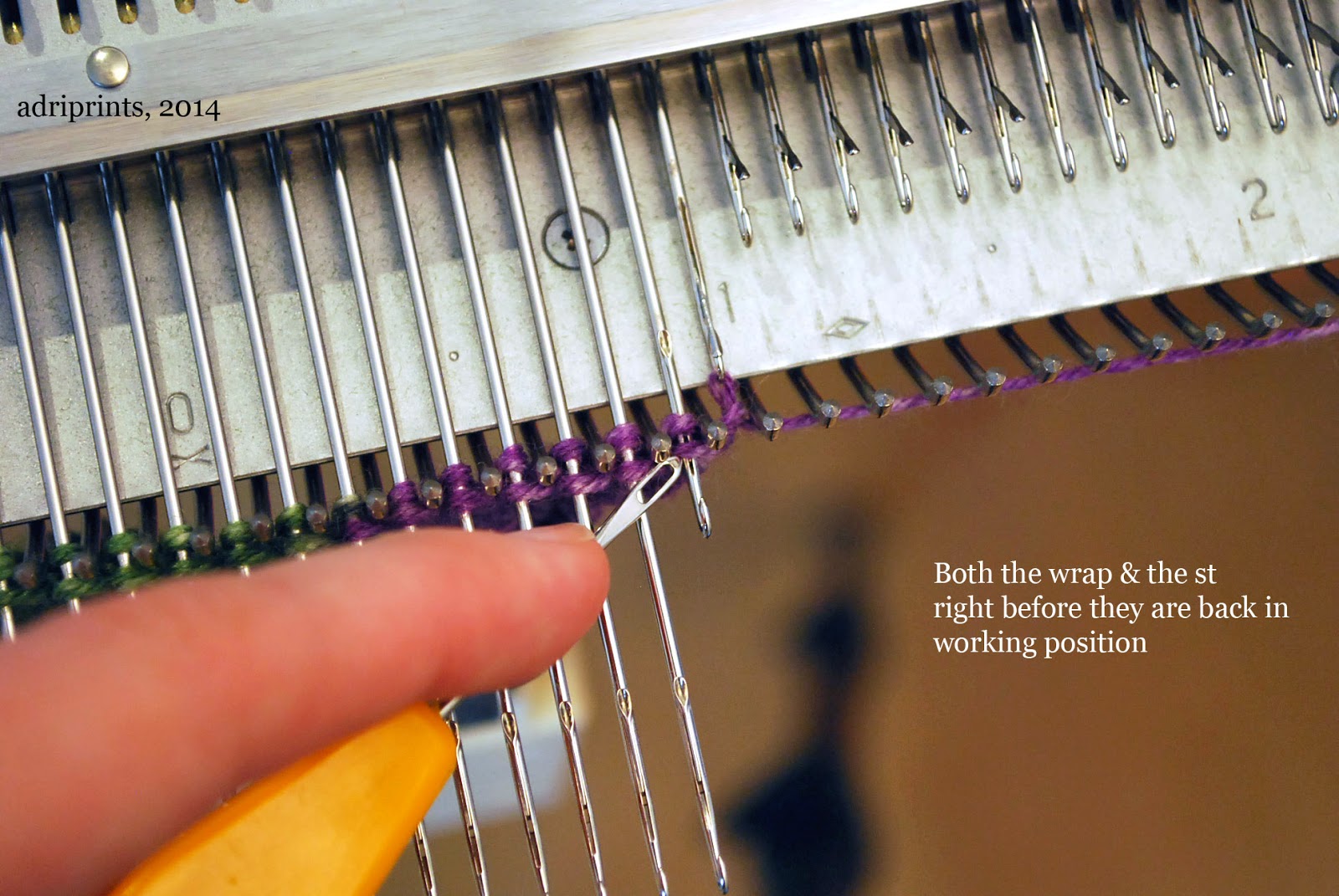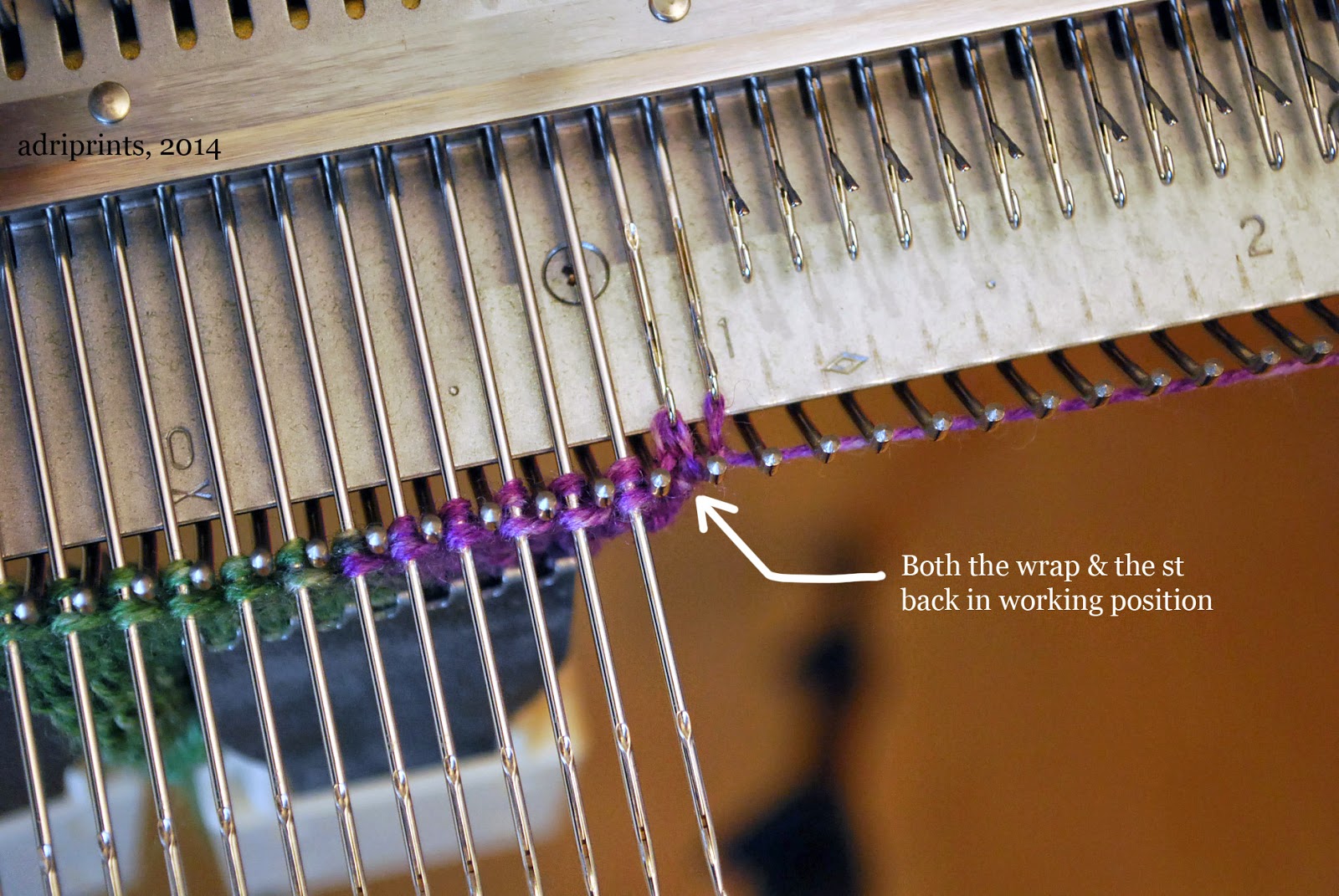First, the facts:
Author: Margaret Radcliffe
Published by: Storey Publishing, 2014
Pages: 296 pages
Type: How-to
Chapters:
1. First Choices: Pattern, Yarn, and Needles
2. Second Thoughts, Planning the Project
3. Third Time Lucky: Modifying Your Pattern
4. Forethought: Shaping and Fitting
5. Work in Progress
6. Evaluation and Adjustments
7. Putting it All Together
8. Borders, Bindings, and Embellishments
The In-Depth Look:
I’m saying right up front that this is one of my favorite kind of knitting books. It’s informative and thoughtful and addresses a whole slew of questions that other books don’t even acknowledge.
I love books filled with great patterns, of course. (God knows I’ve got shelves full of them.) Because how can you not love collections of beautiful photos of garments just waiting for you to make for yourself? They’re inspiring and appealing and great to have around.
But … sometimes you simply want more. Maybe you’re tired of just following in the steps of the designers that came before you. Maybe you like the pattern but not the yarn, or you like the shape but not the neckline. Maybe the pattern uses a technique you dislike, or one you don’t know.
Maybe you just want to get into the designer’s head and know what she was thinking.
Or maybe you just want to understand.
One of my favorite things about knitting–right behind having beautiful, warm, cozy handknits that are unlike anything you can buy in your local clothing store–is that there is so much to know. It’s one of the reasons this site is called “Knitting Scholar,” after all. I like to ask questions and know the hows and whys certain techniques work (or don’t work). I like to know how to modify things if I need to, or how to adapt patterns to suit my needs.
Clearly, Margaret Radcliffe feels the same way.
She says right up front that “Knowledge is Power.” The very first sentence in the book states, “For more than two decades I’ve been focusing my teaching and writing on helping knitters develop their skills and their judgment, on enhancing their creativity and independence.”
Well, that sounds like just my kind of book. I started knitting under the written auspices of Elizabeth Zimmermann and Maggie Righetti, who encouraged independent thought–that you should be a “thinking” knitter, and so I’m always questioning, well, everything about a pattern. I mean, I appreciate as much as the next knitter that a designer has gone to the trouble to do the shaping and all the math for me, but I still like to know.
Obviously, so does Margaret Radcliffe. Her introduction continues with, “So what good are enhanced judgement, a broader knowledge of knitting techniques, and well-developed knitting skills when all you really want to do is follow the directions and knit a sweater? They enable you, even while constructing wonderful sweaters using standard knitting patterns, to tweak each sweater, making exactly the way you want it. You get to take charge of the entire process, both creatively and technically, using the pattern as a starting point. The Knowledgeable Knitter follows the life cycle of a sweater, from selecting the yarn, pattern, and needles, through knitting and finishing.”
What follows is essentially a master class in Everything You Might Need To Know About Knitting.
Yes, many knitters are happy to just follow instructions, but some of us like to know WHY, and this book gives plenty of answers to that. She talks about yarns and needles and how there’s more to swatching than just matching the gauge. There are discussions about cast-ons and finishing, circular versus flat knitting, steeks, shaping, fitting. She talks about fixing mistakes and making adjustments. Blocking. Weaving in ends. Sewing seams. Adding borders. She discusses the zipper “controversy” and the benefits to collars.
Yep. Master-class.
In short, I love this book. It feeds my yearning to understand everything there is about knitting (as if that were possible), but does so in an accessible way. Unlike some wide-ranging how-to books, I don’t feel like I’m being lectured at, but rather as if I’m having a discussion. She’s giving me this information to make my life easier or better, not because I’m doing it “wrong.” I feel free to use or not use any and all of this information (and there’s a lot of it) as I like. As jam-packed full of information as this is, it doesn’t feel like a text-book and it doesn’t feel like a lecture. It’s just … interesting. Extremely, fascinating, informatively interesting.
How can you not love that?
You can get your copy from Amazon.com like I did, or from your local bookstore or yarn shop.
Want to see bigger pictures? Click here.

Other posts for this author:

